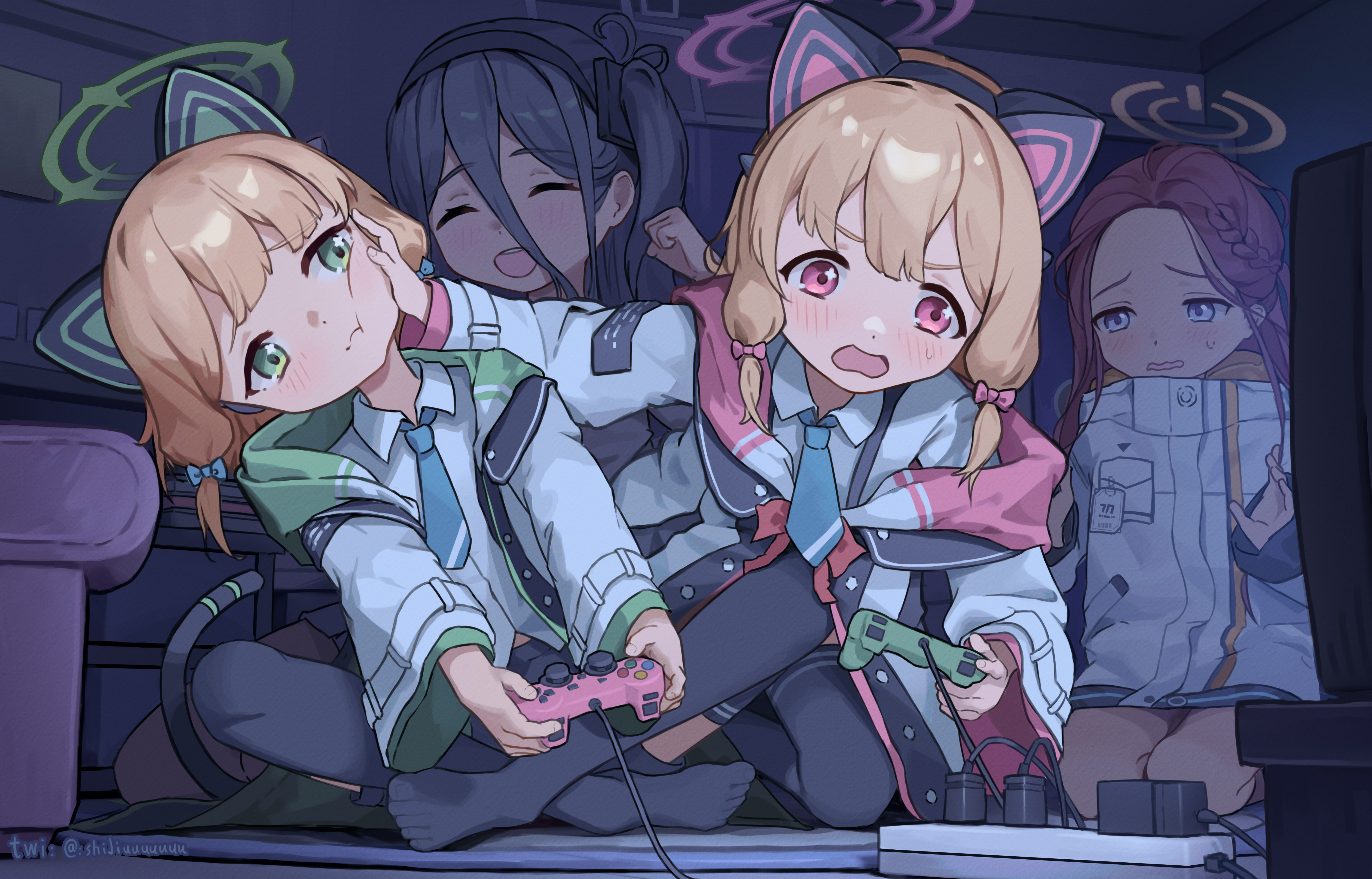/cardfight vanguard s4 - the new main protagonist.jpg)
The new main protagonist in this season, Kai.
Another disastrous HDD crash, where almost all of my anime backlog queues are store, means that there are 6 months between the last post and this one. Of course, a handy amount of procrastination, work and other things like games also contributes to the delay. As mentioned in the previous review, the third anime title for the this blog’s much-delayed ‘Anime of the Year 2014’ would be the 4th season in the Cardfight!! Vanguard series, titled Cardfight!! Vanguard – Legion Mate-hen.
Story:-
Our main male protagonist from the previous three seasons, has mysteriously disappeared into thin air (relinquishing his main protagonist in the process), and the job of finding him now lies with his main ‘love interest’ from the first season. Forming a crack search-and-rescue team consisting mainly of the former main protagonist’s friends, it turns out that the search effort has been complicated by the fact that the former main protagonist has apparently done a heel turn.
The 4th season of this series is definitely the best one, so far, because of various reasons that will be explained below. The first one is definitely the newly introduced Legion Mate gameplay system. where the players can now pair a Level 3 vanguard card with a Level 2 card to achieve various power-ups and abilities. Visually, Legion Mate system is also more impressive compared to previous seasons’ gameplay upgrades like Limit Break or Break Ride.
But what makes the Legion Mate system stands out is, because due to its Level 2 card summoning mechanic, it mitigates the biggest beef I have with the Cardfight!! Vanguard card game in general: reliance on luck when drawing trigger cards. With the Legion Mate system, players can actually deploy some kind of tactics so that he/she can manipulate card compositions at the top of the card’s deck. This can be easily seen in the card battle in episode 192.
The storyline in this 4th season is also the best one when compared to other titles in the series. One major difference this 4th season has compared to the previous three seasons is that I did not apply the sport genre standard handicap here due to the drastically different storyline than the previous seasons. Plus, as mentioned before, the protagonist’s swap is one of the changes happening here; the character in the first screenshot above is now the main character. The previous main protagonist instead has become the final enemy boss, although one with very little airtime. You may think that the lack of airtime for the former main protagonist is a negative aspect of this anime, but unlike quite very many anime out there, the writer has done a clever trick to mitigate this issue, which I will explain later below.
Another change in the storyline that the writer has done in this fourth season compared to the second and the third one in particular, is that there are no overt ‘save the world’ plot anymore. Of course, there is still two planets to save, but at least this aim is obscured, kinda like the way it was done in the first season. As a recap, in the first season, the main male protagonist then (who is the enemy this time) doesn’t even know he is saving the world at that time. Overall, the storyline is pretty solid from the start all the way to the ending, and the only thing you can take away from this anime in this regard is that the plot is predictable.
There is one thing other anime titles, not limited to the previous three seasons of this series, but others too, can learn from this anime, and that would be how to do post-ending episodes. This anime has two of them, and unlike other titles such as Yahari Ore no Seishun Love Come wa Machigatteiru or Kore wa Zombie desu ka?, this anime’s post-ending episodes integrates well with the prior final arc. This is the opposite of the former’s final episode that is so out of place; it ruins an otherwise excellent anime title that has an excellent ending arc. It was in these two episodes that the original main male protagonist got his airtime back, as his character developments winds down for the final time while many (but not all) of the loose ends are being tied up. All is done within a perfectly executed time-jump too.
Character developments in this anime that has already reached 4 seasons and nearly 200 episodes is basically non-existent at best. Only the new main protagonist has any meaningful character development here, which makes him the best character in this anime; the character development is a conventional one too just like what the main antagonist has in the second season. The rest of his search-and-rescue team members actually barely has any, and here is what makes this fourth season great: nearly all of them paid dearly for their stagnant character development in the ending arc. The surly white-haired girl, the spiky-haired middle-school brat and also the current main protagonist’s best friend were all booted out from the final arc right before the final showdown. The less said about the main antagonists for the first and second season, the better. Those two are basically just bystanders in the final arc.
The presentation aspect in this anime is also done very well. The flow of the storyline is excellent from the start to the end, helped by surprisingly well-placed recap scenes virtually in all cases. The pacing is flawless too; the director really knows when to keep a card battle long (like the final showdown) and when not to (like the battle where the spiky-haired brat lose in the final arc). The director seems to already get this figured out after 4 seasons. Finally, the stand trigger card has made its reappearance as shown in the second screenshot above, after being missing for the whole 3rd season. And there are no more deus-ex-machina moments in this fourth season.
As a whole, the fourth season is truly a great title to bring the current series to a close. The anime titled ‘Cardfight!! Vanguard G’ seems to be a new series with brand new main characters that takes place after this anime. I for sure will want to watch it in the future.
Character Design:-
My comment for this section in the first season’s review still applies.
Voice Acting:-
My comment for this section in the first season’s review still applies.
Music:-
In my review of the third season of this series, I’ve mentioned that its 1st OP theme is the best OP/ED theme across all three seasons. Well, the 1st ED theme of this fourth season has just surpassed it in quality. This is one of the two bright spots for this anime in this aspect, because the rest of the OP and ED themes in this anime are just average. The other bright spot for this anime is that the OST has managed to keep up its high standards brought forward from the first season onwards.
/cardfight vanguard s4 - finally making an appearance.jpg)
Spotted in the wild: A stand trigger card!
Animation/Direction:-
This is where this anime has regressed a lot compared to the previous seasons. For starters, the fourth season still retains the usage of the blurry animation techniques that was deployed in many action scenes in this anime. But the kicker here is the drastic drop of quality in character animations and character compositions, when compared to previous seasons. Jerky animations and deformed characters, especially faces, ruins certain characters especially the surly white-haired girl and the main antagonist of the first season.
General animations are decent though, and so is integration between CGI and 2D animations. The director has really improved in this series’ final season, more than making up to the some messy issues seen in the third season. After all, stand triggers has made their comeback!
Conclusion:-
9 out of 10. The best Cardfight!! Vanguard title to date, and also the front-runner in this blog’s ‘Anime of the year 2014’ audition so far. I have decided that there will be only 5 titles I will review for the audition, and for penultimate review in the audition, it will be for Seirei Tsukai no Blade Dance. I hope it doesn’t suck.
Shortlink: https://wp.me/prgSo-FU


/cardfight vanguard s3 - this guy over here knows the reality of this game Animax doesnt.jpg)
/cardfight vanguard s3 - and the main protagonist slowly will admit what this is all about.jpg)
/cardfight vanguard s3 - quoted for truth.jpg)
/cardfight vanguard s3 - this deux ex machina card really does not help this anime one bit.jpg)
/cardfight vanguard s3 - the living proof of what this game is all about.jpg)
/cardfight vanguard s3 - did the writer ever consider the huge plot hole this event will cause when writing this scene.jpg)
/cardfight vanguard s3 - the tsundere of the series.jpg)
/cardfight vanguard s3 - the main antagonist of this season.jpg)
/cardfight vanguard s3 - one season too late for you to do this.jpg)
/strike the blood - the main male protagonist.jpg)
/strike the blood - this anime has excellent production value.jpg)




















